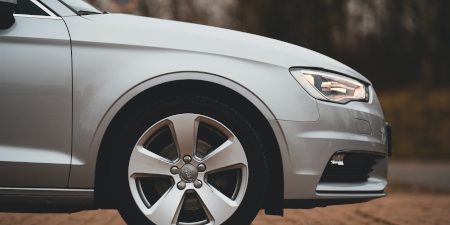Buying a vehicle can be an exciting task, but when it comes to purchasing secondhand, emotions of fearcan be sparked. How can you be confident that the seller is reputable?Can you guarantee that the vehicle is safe? With questions such as these circling in your mind, allow us to lend a helping hand with our secondhand vehicle checklist.
External checks whilst the ignition is off:
Upon arrival, the engine should not be running. Sellers experiencing faults with the engine of their vehicle often escape facing up to these issues by having the car up and running upon arrival. If this is the case, you should ask if you are able to swich it off. You will want to start from scratch to assess the vehicle in a reliable way.
Once the engine is off, there are a handful of checks you should make from outside the car:
- Examine the bodywork
You should take the time to assess the bodywork of the vehicle, taking a close look for dents and scratches. A slight difference in paint colour across panels could signal that there has previously been an impact to that area of the vehicle. You should keep this in mind when it comes to assessing how the vehicle drives. You should also check underneath the vehicle and wheel arches.
- The tyres
All tyres, including the spare (if applicable to your vehicle), should be assessed. The tread depth should abide with the legal minimum depth of 1.6mm. You should also check for any untreated punctures, bulges or splits which could cause you danger during the test drive or after the possible purchase.
- Leaks
This check should be left until last to keep you safe if the vehicle had just been running. Once cooled, pop open the bonnet to take a look into the engine for evidence of leaks. Yellow, white or green staining marks will signal an internal leak associated with oil or coolant within the bonnet. You should also look for signs of leaks on the tarmac beneath the car. If the vehicle is parked on grass, you should ask for it to be moved.
Internal checks whilst the ignition is off:
- The gearbox
With the handbrake still in place, press down on the clutch and shift into each gear, including reverse. The gearstick should shift smoothly without any resistance or grinding noises.
External checks whilst the ignition is on:
The following checks should take place whilst the engine of the vehicle is running, but with the handbrake still in place and the vehicle stationary.
- The exhaust
Locate the exhaust at the rear of the vehicle. The density and colour of any smoke could be a giveaway sign of internal engine issues. Any sign of smoke should result in the vehicle being assessed by a professional.
Blue or grey smoke can hint towards the presence of oil within the cylinders, indicating a fault with the internal seals or head gasket.
Black smoke is a key indicator that the engine of the vehicle is burning excess fuel.
Internal checks whilst the ignition is on:
- The clutch
Test the clutch to find the biting point. You will want to make sure that the car doesn’t begin to shift only whilst the clutch is pressed down to the floor, as this could indicate the need for a repair. Biting points should be found at the mid-range of the clutch.
- Electrical controls
Take the time to assess the internal electrical controls of the vehicle. This would include the air conditioning, window controls, heater, lighting, windscreen wipers, radio, and AUX. You should also take this time to view the dashboard, taking note of any warning lights that may be displayed.
The test drive:
If you are happy with the way the vehicle looks and feels from the previous checks, you should requesta test drive. During the drive, you should keep an ear out for any mechanical sounds such as clunking or grinding, as well as testing the steering and braking. The steering should be responsive without any dragging or ‘free play’, whilst the reaction of thebrakes should provide you with confidence and reassurance that you are in control of the vehicle.
The documentation:
Whilst viewing the vehicle, you should also request to see the legal documentation. This includes:
- V5c
- Service history
- MOT
You will be able to track the vehicle’s service history by contacting the manufacturer themselves or requesting details from the seller. This will allow you to find out if the vehicle has been stolen, rightly paid for, or involved in an accident that has resulted in the car being written off.After analysing the vehicle, the choice is down to you. If you do find any damage or faults, you are left with three options:
- Ask for a discounted price, allowing you to pay for the repair work yourself
- Request that the seller repairs the damage and allows you to come back for a second viewing
- Walk away
At RKH Service and Repair, we are on hand to provide expert advice, MOTs, servicing, and repair work for secondhand vehicle purchases. Get in touch with our team who will be happy to help. Give us a call on 01233 877797 or email us at admin@rkhserviceandrepair.co.uk.




